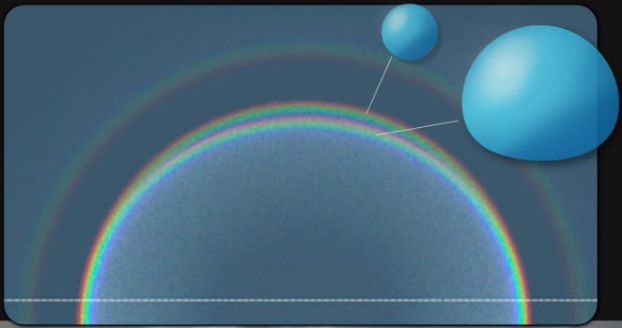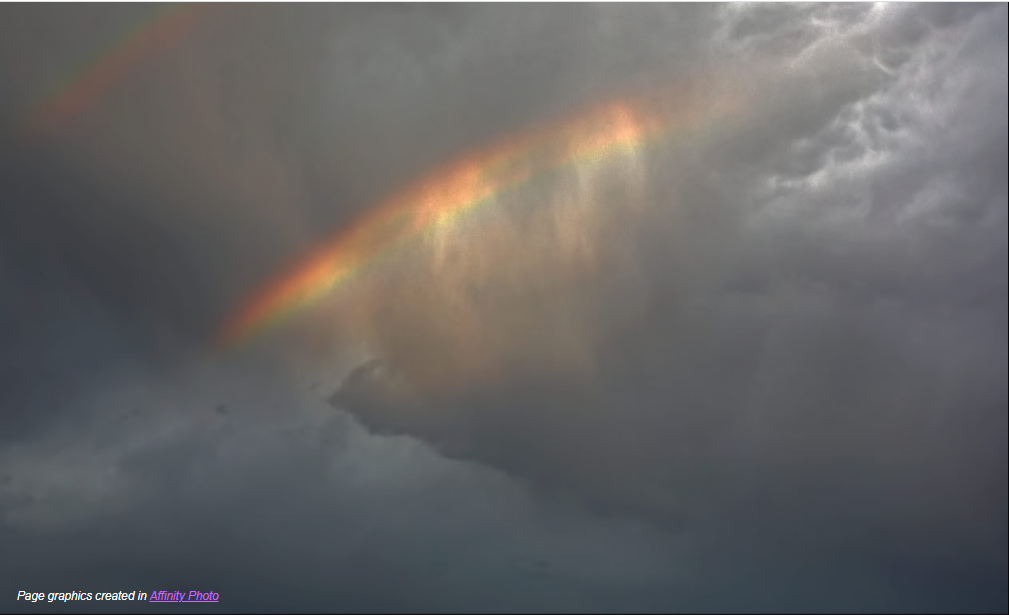Twinned rainbow
Twinned Rainbow: A Spectacular Atmospheric Phenomenon
Rainbows are one of nature's most captivating displays of color and light. We've all marveled at the sight of a vibrant arc stretching across the sky after a rain shower. But have you ever heard of a twinned rainbow? This elusive phenomenon occurs when the primary rainbow splits into two distinct arcs, creating a mesmerizing and rare optical spectacle.
A twinned rainbow is not to be confused with supernumerary rainbows, which are faint, additional bands of color that appear within the primary rainbow. Twinned rainbows are characterized by the splitting of the primary bow itself, resulting in two separate and parallel arcs. While they may be fleeting and last only for a few seconds, they are truly a sight to behold.
The formation of twinned rainbows is closely tied to the size and shape of raindrops. Typically, raindrops are spherical and uniform in size, producing a circular primary rainbow. However, in the case of twinned rainbows, there are two distinctly different raindrop sizes present. This can occur when there are two separate rain clouds behind each other or when raindrops of different sizes mix together within a single cloud.
The size difference in the raindrops is crucial in creating the twinned effect. Smaller raindrops, approximately 1mm in diameter, maintain their spherical shape as they fall through the atmosphere. Consequently, they generate a circular primary bow, similar to what we typically observe. On the other hand, larger raindrops experience air resistance as they descend, causing them to flatten slightly. This alteration in shape leads to the creation of an oval-shaped secondary bow that appears outside the primary bow.
It is important to note that twinned rainbows are relatively rare occurrences. They require specific atmospheric conditions and the presence of raindrops with distinct size differences. Consequently, they tend to be fleeting and may only be visible for a brief moment before disappearing. Therefore, it is essential to pay close attention to the sky and watch for any flickering or splitting of the rainbow if you hope to catch a glimpse of this captivating phenomenon.
To further understand the intricacies of twinned rainbows, scientists have employed ray tracing techniques. By replacing the mathematical ice crystals typically used in simulations with raindrops, researchers have been able to gain insights into the formation process of these dual rainbows. These simulations provide a visual representation of how the interaction between different-sized raindrops can lead to the splitting effect observed in twinned rainbows.
In conclusion, twinned rainbows are a remarkable atmospheric phenomenon that occurs when the primary rainbow splits into two distinct arcs. The presence of raindrops with different sizes is essential in creating this mesmerizing optical display. While they may be elusive and short-lived, twinned rainbows offer a glimpse into the complexity and beauty of nature's interplay with light and water droplets. So, the next time you find yourself gazing at a rainbow, keep an eye out for any flickering or splitting – you might just witness the awe-inspiring sight of a twinned rainbow.
Twinned Rainbow

Imaged in Spain by Joaquin Querol. For a short while the bow split into two - not to be confused with supernumeraries. There were two storm systems and it is likely that the each bow came from a different rain cloud.
Image ©2019 Joaquin Querol, shown with permission

A twinned bow is where the primary rainbow splits into two. The outer secondary bow is almost always undisturbed. Watch a rainbow closely because twinning is fugitive. It can flicker into sight for just a second or so.
Twinned bows are formed when there are two distinctly different raindrop sizes. Either from two different rain clouds behind each other or mixed together. Small ~1mm dia. drops are spherical and give a nice circular bow. Larger drops are flattened by air resistance as they fall and generate slightly oval rainbows.
At right: A ray tracing made by replacing the mathematical ice crystals in HaloSim by raindrops.

Note: this article has been automatically converted from the old site and may not appear as intended. You can find the original article here.
Reference Atmospheric Optics
If you use any of the definitions, information, or data presented on Atmospheric Optics, please copy the link or reference below to properly credit us as the reference source. Thank you!
-
<a href="https://atoptics.co.uk/blog/twinned-rainbow/">Twinned rainbow </a>
-
"Twinned rainbow ". Atmospheric Optics. Accessed on November 26, 2024. https://atoptics.co.uk/blog/twinned-rainbow/.
-
"Twinned rainbow ". Atmospheric Optics, https://atoptics.co.uk/blog/twinned-rainbow/. Accessed 26 November, 2024
-
Twinned rainbow . Atmospheric Optics. Retrieved from https://atoptics.co.uk/blog/twinned-rainbow/.